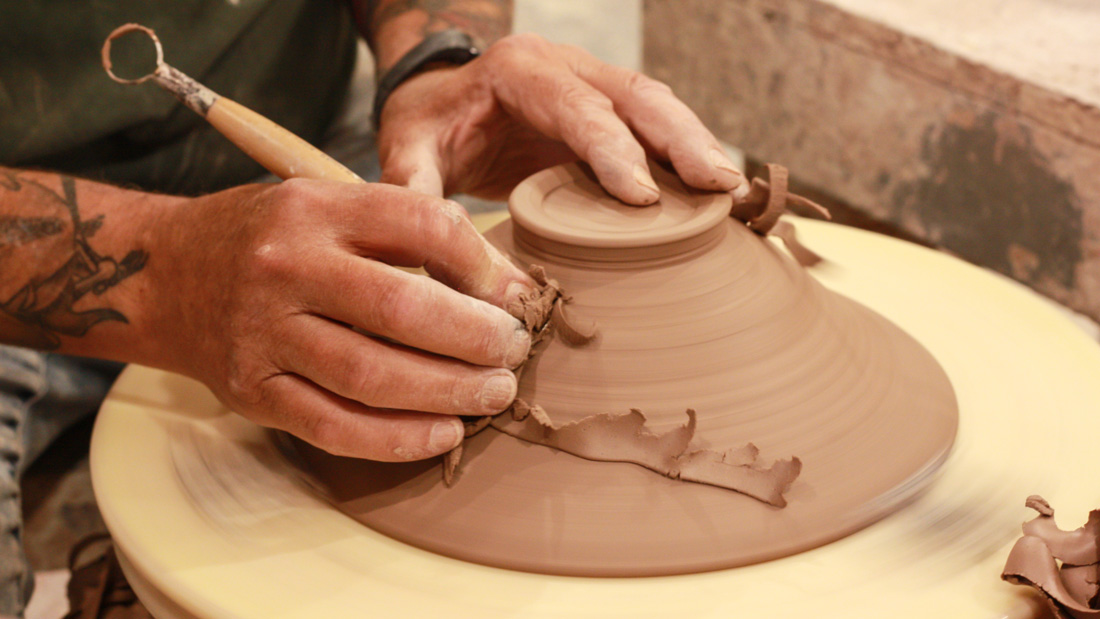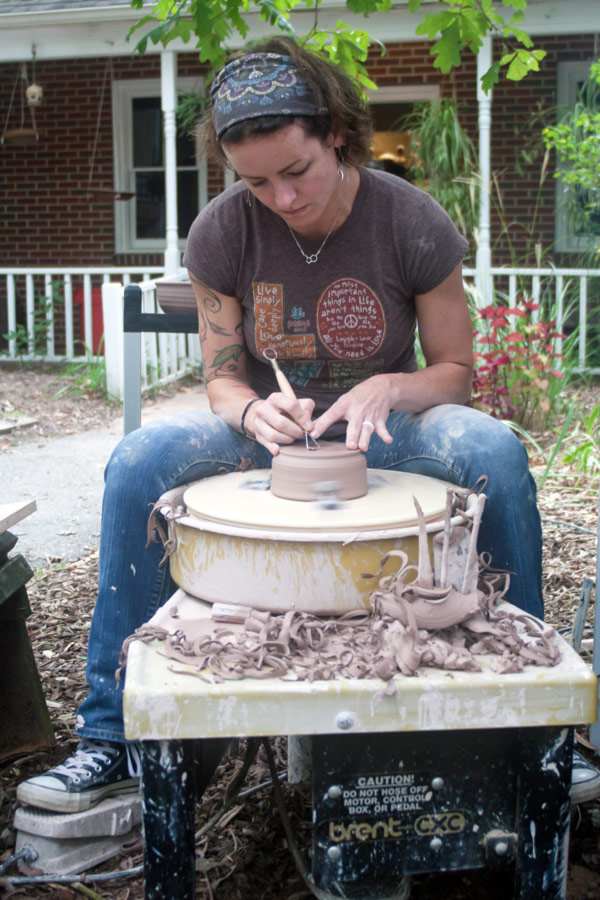
Watch Ceramic Wheel Throwing, Handbuilding, Glazing, & More!
The Pottery Studio opened in 1976, and it remains one of the most popular attractions to visitors. The one-on-one visitor experience here makes the medium accessible, allowing for an intimate view of the artist’s process. Most of the work completed in the studio is wheel-thrown and either salt-fired or fired in a reduction kiln.
It operates as a functioning production pottery studio where the artists working in this space make their living from their wares. The demonstrations are presented in a contemporary context but informed with a unique historical reference. When the studio first opened, it was only one room; in 2004, an expansion effort took place, allowing the studio to extend into two-thirds of the building. This undertaking benefited the artists’ growth while also providing programming space for guest artists and workshops.
The Pottery Studio has also been home to a co-operative program for interns for almost 20 years. The program began with students from Rowan University for college credit and has since grown to include area artists of all ages. The studio accepts one intern a year for the experience of working in a functioning studio as opposed to an education environment. Interns assist with kiln building, firing of kilns, and glaze mixing in exchange for time to create their own pieces and the knowledge gained through the entire experience. Interns also work in front of the public, interpreting the craft of ceramics.

The Creative Process of Ceramics, as told by Senior Potter, Terry Plasket –
“The creative process is an individual, independent thing. Everything from the form to the surface decoration is a decision made by the artist. The piece slowly unfolds for the artist, and then the viewer must look through those layers of form and surface to see what the artist has revealed.
I am always sketching; however, the forms take shape on the wheel through a stream of consciousness. The wheel itself is simply a tool – a means to an end. For me, each work is complete only after glazing and firing. The combination of form and surface brings each piece into being.
Vessels seem, to me, to be what pottery is all about. The art of making vessels goes back more than 10,000 years and spans thousands of cultures. Being part of that kind of history and continuing that tradition today is my contribution. I enjoy making pots that people use. The beauty of the vessel is in its function.”

